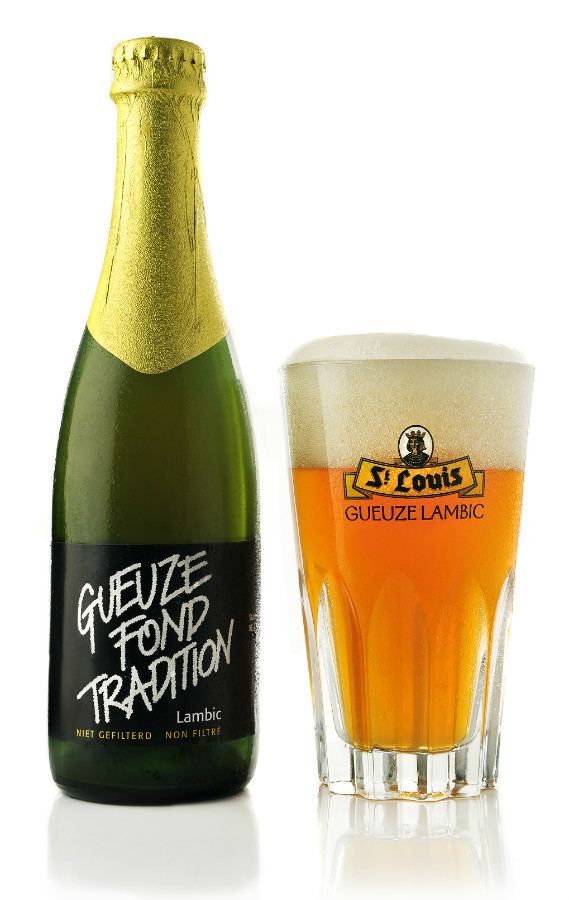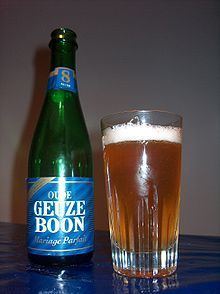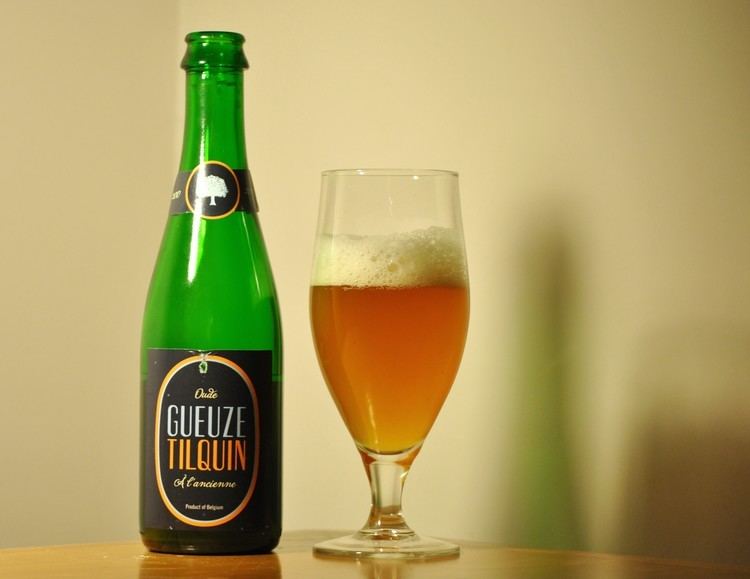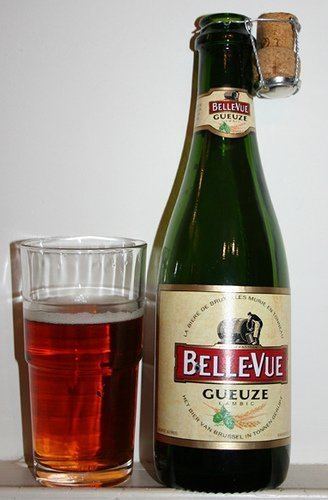Malt percentage 60-70% IBU range 0 – 10 Malt Pilsner, Flaked wheat | Alcohol by volume 4-6% ABV range 5% – 8% Color Golden Yeast Ale, Brettanomyces | |
 | ||
Yeast type Spontaneous fermentation Commercial examples Cantillon Gueuze Lambic Similar | ||
Sours beers part 3 gueuze episode 112
Gueuze (or Geuze) is a type of lambic, a Belgian beer. It is made by blending young (1-year-old) and old (2- to 3-year-old) lambics, which is bottled for a second fermentation. Because the young lambics are not fully fermented, the blended beer contains fermentable sugars, which allow a second fermentation to occur. Lambic that undergoes a second fermentation in the presence of sour cherries before bottling results in kriek lambic, a beer closely related to gueuze.
Contents
- Sours beers part 3 gueuze episode 112
- Lindemans gueuze lambic beer by brouwerij lindemans belgian craft beer review
- Etymology
- Commercial production
- Oude Gueuze breweries and beers
- Non Pajottenland Brussels
- Internationally
- References

Since gueuze is made by blending lambics, it tastes different from traditional ale and lager style beers. Because aged hops are used to produce these lambics, the beer has little to none of the traditional hop flavor and aroma that can be found in most other styles of beer. Furthermore, the wild yeasts that are specific to lambic-style beers give gueuze a dry, cider-like, musty, sour, acetic acid, lactic acid taste. Many describe the taste as sour and "barnyard-like". Because of its carbonation, gueuze is sometimes called "Brussels Champagne".

In modern times, some brewers have added sweeteners such as Aspartame to their gueuzes to sweeten them, trying to make the beer more appealing to a wider audience. The original, unsweetened version is often referred to as "Oude Gueuze" ("Old Gueuze") and has become more popular in the early 2000s. Tim Webb, a British writer on Belgian and other beers, comments on the correct use of the term "'Oude gueuze' or 'oude geuze', now legally defined and referring to a drink made by blending two or more 100% lambic beer."

Traditionally, gueuze is served in champagne bottles, which hold either 375 millilitres (12.7 US fl oz) or 750 millilitres (25 US fl oz). Traditionally, gueuze, and the lambics from which it is made, has been produced in the area known as Pajottenland and in Brussels. However, some non-Pajottenland/Brussels lambic brewers have sprung up and one or two also produce gueuze - see table below. Gueuze (both 'Oude' and others) qualified for the European Union's designation 'TSG' (Traditional Speciality Guaranteed) in 1997/98 - see Geographical indications and traditional specialities (EU).

Lindemans gueuze lambic beer by brouwerij lindemans belgian craft beer review
Etymology

There is some debate on where the word gueuze originated. One theory is that it originated from Geysa (geyser), Old Norse for gush, as, during times of vigorous fermentation, Gueuze will spew out of the bunghole of its enclosing oak barrel. Another theory is that it originates from gueuze, the Old Norse word for wheat (which makes up a portion of the lambic grist).

The most likely theory says that the name stems from the 'Geuzenstraat' (Geuzen Street) in Brussels where a lambic brewery was established. The story is that when the French under Napoleon occupied Belgium and thus Brussels, a lot of Champagne was drunk in Brussels. Champagne was something rather new in Brussels in those days and had become a real hype. This beverage came in strong glass bottles (most beer at the time was supplied in barrels). One brewer, situated in the Geuzenstraat, had the idea to collect the empty Champagne bottles and to refill them with what was called lambic beer. He added a bit of sugar for a second fermentation and re-sealed the bottles with a cork which was similar to the Champagne cork. By doing so, he hoped to benefit a bit from the Champagne hype. The new beer was a success and soon obtained the name "from the Geuzenstraat" or gueuze. The bigger gueuze bottles are still very similar to Champagne bottles today.
Commercial production
Commercial production of gueuze commenced in the 19th century; modern breweries that produce gueuze include:
Both gueuze and lambic are protected under Belgian (since 1965) and European (since 1992) law.
Oude Gueuze breweries and beers
Information extracted from Webb
Non-Pajottenland / Brussels
Internationally
Some American craft breweries have begun producing blends of young and old sour beers to produce their own versions of the traditional gueuze.
